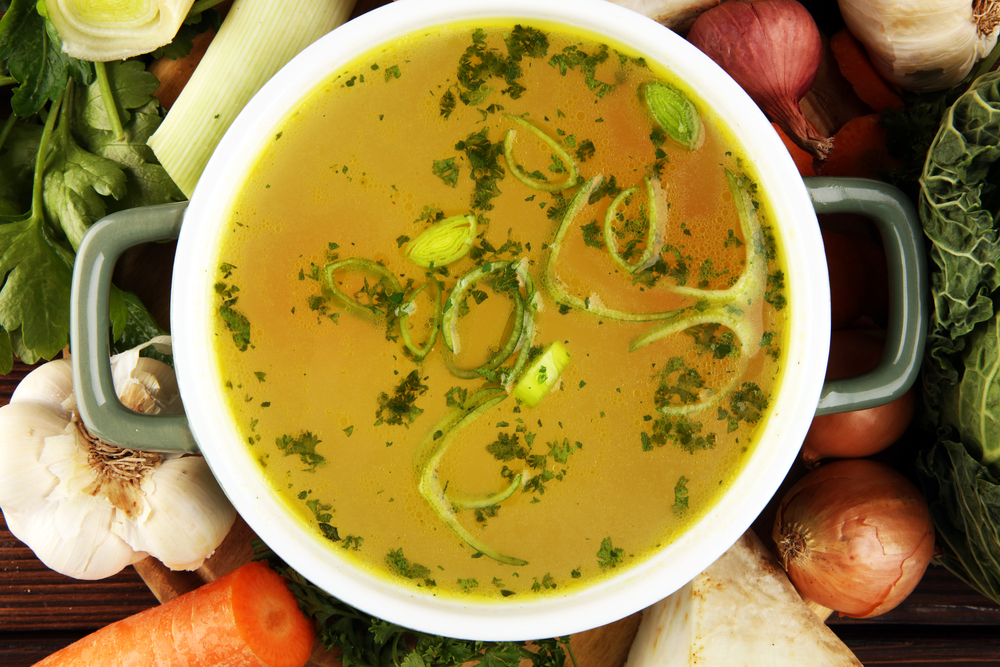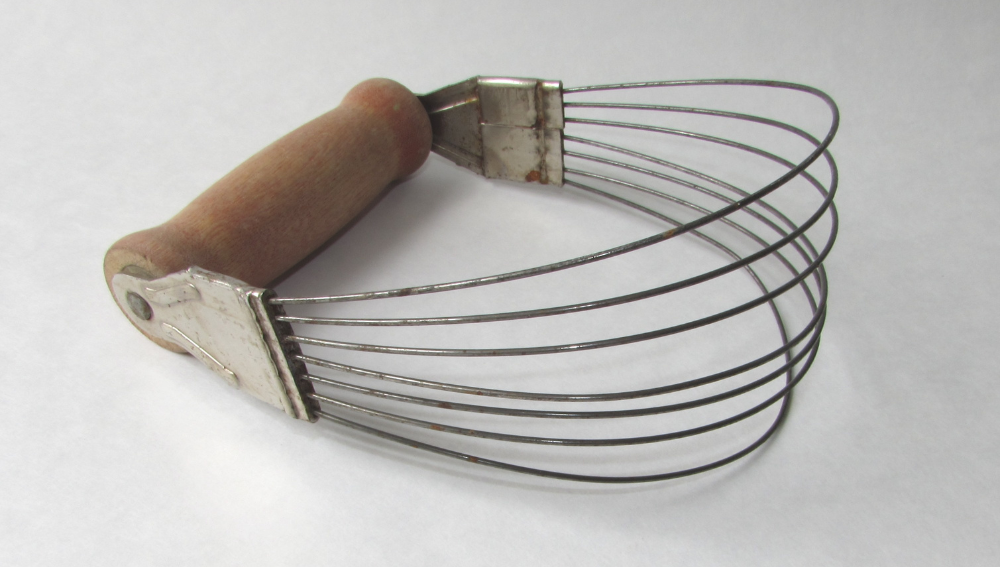As a home cook or professional chef, having the right knife in your kitchen is essential. With the plethora of knife options available, it can be challenging to determine which knife is best suited for your needs. Two knives that are often compared are the nakiri knife and the santoku knife.
While both knives are Japanese in origin and designed for similar purposes, there are distinct differences between the two.

Understanding the Basics of each knife is crucial in determining which one is best for your needs. The nakiri knife is a Japanese vegetable knife that is designed for precise and clean cuts.
The blade of the nakiri knife is rectangular, with a straight edge that runs from the tip of the blade to the heel.
In contrast, the santoku knife is a multi-purpose knife that combines the functions of a chef’s knife and a vegetable knife. The blade of the santoku knife is shorter and wider than a chef’s knife, with a flatter edge and a rounded tip.
Design and Construction are also important factors to consider when choosing between the nakiri knife and the santoku knife.
The nakiri knife typically features a double-beveled blade with a flat edge that is ground straight to the tip. The blade of the nakiri knife is usually thin and lightweight, making it easy to maneuver.
On the other hand, the santoku knife features a wider blade with a unique shape that allows for rocking motion when chopping. The blade of the santoku knife is usually thicker and heavier than the nakiri knife, providing more heft and balance when cutting.
Key Takeaways
- The nakiri knife is a Japanese vegetable knife designed for precise and clean cuts, while the santoku knife is a multi-purpose knife that combines the functions of a chef’s knife and a vegetable knife.
- The nakiri knife typically features a double-beveled blade with a flat edge that is ground straight to the tip, while the santoku knife features a wider blade with a unique shape that allows for rocking motion when chopping.
- Choosing between the nakiri knife and the santoku knife ultimately depends on personal preference and the specific tasks you need the knife to perform.
Understanding the Basics

When it comes to kitchen knives, the Nakiri and Santoku are two of the most popular types of Japanese knives. Both knives are versatile, all-purpose knives that can handle a variety of tasks in the kitchen. However, there are some key differences between the two that are worth noting.
The Nakiri knife is a traditional Japanese knife that is designed for chopping vegetables. It has a straight blade that is typically around 6-7 inches long and a thin profile that makes it easy to maneuver. The blade is also very sharp, which makes it ideal for slicing through vegetables with ease.
On the other hand, the Santoku knife is a more modern Japanese knife that is designed to be an all-purpose knife. It has a shorter, wider blade than the Nakiri knife, typically around 5-7 inches long, and a slightly curved blade that makes it ideal for slicing, dicing, and mincing.
The blade is also wider than the Nakiri knife, which makes it easier to scoop up chopped ingredients.
When comparing the two knives, it’s important to consider the tasks you’ll be using them for. If you primarily chop vegetables, the Nakiri knife is the better choice. However, if you need a knife that can handle a variety of tasks, the Santoku knife is the way to go.
It’s also worth noting that both knives require some skill to use properly. While they are both versatile kitchen tools, they may take some getting used to if you’re used to using a traditional chef’s knife. However, with a little practice, you’ll be able to use both knives to their full potential.
Overall, the Nakiri and Santoku knives are both excellent choices for anyone looking for a high-quality Japanese knife. Whether you’re a professional chef or a home cook, these knives are sure to become an essential tool in your kitchen.
Design and Construction
When comparing the Nakiri and Santoku knives, it’s important to consider their design and construction. Both knives have unique features that make them suitable for different tasks in the kitchen.
Blade Design
The Nakiri knife has a straight-edge blade with a flat cutting edge that is ideal for chopping vegetables. The blade is thin and has a squared tip, which makes it easier to cut through dense vegetables like carrots and potatoes.
On the other hand, the Santoku knife has a shorter and wider blade with a pointed tip, which makes it suitable for slicing, dicing, and mincing.
Handle Design
The handle of a knife is an important factor to consider when choosing between the Nakiri and Santoku knives. The Nakiri knife usually has a straight handle that provides a comfortable grip and allows for precise cutting.
However, the Santoku knife has a curved handle that provides a better grip and is more comfortable to hold for extended periods.
Edge Design
When it comes to the edge design, the Nakiri knife usually has a double bevel edge grind, which means that both sides of the blade are sharpened. This makes it suitable for both left and right-handed users.
On the other hand, the Santoku knife has a single-bevel edge grind, which means that only one side of the blade is sharpened. This makes it more suitable for right-handed users.
Material Comparison
Both the Nakiri and Santoku knives are made from high-quality materials like Damascus steel and stainless steel. Damascus steel is known for its strength and durability, while stainless steel is resistant to rust and corrosion.
However, the Nakiri knife is usually thinner and lighter than the Santoku knife, which makes it easier to handle and maneuver.
Historical Context
The Nakiri knife has its origins in the Edo era of Japan, where it was used for cutting vegetables and other food items.
On the other hand, the Santoku knife was developed after World War II and was designed to be a more versatile alternative to the traditional Japanese chef’s knife. Today, both knives are popular among professional chefs and home cooks alike.
In conclusion, the design and construction of the Nakiri and Santoku knives are unique and offer different benefits depending on the task at hand.
It’s important to consider the blade design, handle design, edge design, material comparison, and historical context when choosing between these two knives.
Performance and Application
Versatility
Both the nakiri and santoku knives are versatile knives that can handle a variety of tasks in the kitchen. However, the santoku knife is generally considered to be more versatile than the nakiri knife.
This is because the santoku knife has a curved blade that allows for a rocking motion when cutting, making it ideal for slicing meat, fish, and vegetables.
The nakiri knife, on the other hand, has a straight blade that is better suited for chopping and slicing vegetables.
Precision
When it comes to making precise cuts, the nakiri knife is the better option. Its straight blade allows for more control and accuracy when slicing thin slices of food.
The santoku knife, on the other hand, has a curved blade that can make it more difficult to make precise cuts.
Cutting Techniques
Both the nakiri and santoku knives can be used for a variety of cutting techniques. The nakiri knife is best suited for chopping and slicing vegetables, while the santoku knife is better for slicing meat, fish, and fruit.
The santoku knife can also be used for chopping and slicing vegetables, but its curved blade makes it less effective for these tasks than the nakiri knife.
Best Use Cases
The nakiri knife is an all-purpose kitchen knife that is ideal for chopping and slicing vegetables. It is also great for mincing herbs and cutting cheese.
The santoku knife, on the other hand, is a general-purpose knife that can be used for a variety of tasks in the kitchen. It is ideal for slicing meat, fish, and vegetables, as well as chopping and mincing herbs.
In conclusion, both the nakiri and santoku knives are versatile and effective kitchen knives. The nakiri knife is more precise and better suited for chopping and slicing vegetables, while the santoku knife is more versatile and better suited for slicing meat, fish, and fruit.
When choosing between the two, it is important to consider your specific application and needs in the kitchen.
Specific Knife Analysis
Santoku Knife
The Santoku knife is a popular all-purpose kitchen knife that originated in Japan. It’s known as the “three virtues” knife because it excels at slicing, dicing, and mincing. It has a shorter length than a chef’s knife, typically around 6 to 7 inches, making it easier to handle.
The blade is also wider and more rectangular, allowing for more surface area to come into contact with the cutting board.
One of the defining features of the Santoku knife is its granton edge, which are small divots on the blade that prevent food from sticking to the knife.
This is particularly useful when cutting starchy vegetables like potatoes or squash. The blade is also slightly curved, allowing for a rocking motion when chopping or mincing.
Overall, the Santoku knife is a versatile and reliable option for any home cook or professional chef. It’s a great addition to any knife collection and can handle a wide range of tasks in the kitchen.
Nakiri Knife
The Nakiri knife is a Japanese vegetable knife that is designed specifically for chopping and slicing vegetables. It has a straight blade that is squared off at the tip, allowing for precise cuts and minimal wastage.
The blade is also thinner than a Santoku knife, which allows for more control when cutting through delicate vegetables like herbs or greens.
One of the main benefits of the Nakiri knife is its flat blade, which allows for a straight up-and-down chopping motion.
This is particularly useful when cutting through hard vegetables like carrots or potatoes. The flat blade also makes it easier to achieve a consistent thickness when slicing vegetables.
Overall, the Nakiri knife is a great addition to any kitchen that focuses on vegetable-heavy dishes. It’s also a good option for those who prefer a lighter knife or have smaller hands. However, it may not be as versatile as a Santoku knife or other all-purpose kitchen knives.
| Knife | Length | Blade Shape | Blade Thickness | Uses |
|---|---|---|---|---|
| Santoku | 6-7 inches | Rectangular | Thicker than Nakiri | Slicing, dicing, mincing |
| Nakiri | 6-7 inches | Straight, squared off | Thinner than Santoku | Chopping, slicing vegetables |
In conclusion, both the Santoku and Nakiri knives have their own unique features and benefits. The Santoku knife is a versatile all-purpose kitchen knife that can handle a wide range of tasks, while the Nakiri knife is a specialized vegetable knife that excels at chopping and slicing vegetables.
Ultimately, the choice between the two comes down to personal preference and the specific needs of the user.
Choosing the Right Knife
When it comes to choosing between a Nakiri knife and a Santoku knife, there are a few factors to consider. Here are some things to keep in mind when deciding which knife is the best fit for you.
For Professional Chefs
Professional chefs often prefer Japanese chef knives, and both the Nakiri and Santoku knives are popular choices. The Nakiri knife is great for precise vegetable cutting, while the Santoku knife is versatile and can handle a variety of tasks.
When choosing between the two, consider the types of dishes you typically prepare and which knife will be most useful for those tasks. Additionally, price and quality are important factors to consider for professional chefs, as they need a knife that will hold up to frequent use.
For Home Cooks
For home cooks, the decision between a Nakiri knife and a Santoku knife may come down to personal preference. Both knives are great for everyday use and can handle a variety of tasks.
If you are a beginner, the Nakiri knife may be easier to use due to its straight blade and precise cutting capabilities. However, if you are looking for a versatile knife that can handle a variety of tasks, the Santoku knife may be the better option.
Based on Personal Preference
Ultimately, the decision between a Nakiri knife and a Santoku knife comes down to personal preference. Both knives are great options, and the best one for you will depend on your individual needs and preferences.
Consider the tasks you will be using the knife for, as well as your budget and desired level of quality. Whether you are a professional chef or a home cook, there is a Nakiri or Santoku knife out there that is perfect for you.
Maintenance and Care
Maintaining and caring for your knives is essential for their longevity and optimal performance. Here are some tips to keep your nakiri and santoku knives in top condition:
1. Sharpening
Both nakiri and santoku knives require regular sharpening to maintain their sharpness. Nakiri knives are usually sharpened to a 30-degree angle, while santoku knives are sharpened to a 20-degree angle.
It’s important to use the correct sharpening angle to avoid damaging the blade. You can use a sharpening stone or a honing rod to sharpen your knives.
2. Cleaning
After using your knife, clean it immediately with warm water and mild soap. Avoid using abrasive sponges or harsh detergents that can damage the blade. Dry the knife thoroughly to prevent rusting.
3. Storage
Store your knives in a knife block, magnetic strip, or sheath to protect the blade from damage. Avoid storing them in a drawer where they can get scratched or damaged.
4. Maintenance
Regular maintenance can help extend the life of your knives. Check for any nicks or chips in the blade, and have them repaired by a professional if necessary. Oil the blade occasionally to prevent rusting.
By following these maintenance and care tips, you can ensure that your nakiri and santoku knives stay sharp and in top condition for years to come.
Frequently Asked Questions

What is the difference between a nakiri knife and a santoku knife?
A nakiri knife is a Japanese vegetable knife that has a straight blade with a squared-off tip. On the other hand, a santoku knife is a multipurpose Japanese knife that usually has a shorter blade than a nakiri knife, with a curved edge and a pointed tip.
While both knives are great for chopping vegetables, the nakiri knife is better suited for precision cuts and the santoku knife is more versatile.
What are the advantages of using a nakiri knife over a santoku knife?
The nakiri knife’s flat blade makes it perfect for cutting vegetables with a push-pull motion, which is great for precision cuts.
The straight blade also ensures that every cut is even and consistent. Additionally, the nakiri knife’s squared-off tip is perfect for removing the eyes from potatoes and other vegetables.
What are the advantages of using a santoku knife over a nakiri knife?
The curved edge of a santoku knife makes it more versatile than a nakiri knife. The pointed tip is perfect for slicing meat, and the curved blade allows for a rocking motion, which is great for chopping herbs and other ingredients. The shorter blade also makes it easier to handle and maneuver.
Can a nakiri knife be used as a replacement for a chef knife?
While a nakiri knife is great for chopping vegetables, it cannot replace a chef knife. A chef knife is more versatile and can be used for a variety of tasks, such as slicing meat and fish, and chopping herbs and other ingredients.
What are the main uses of a nakiri knife?
A nakiri knife is mainly used for chopping vegetables, such as onions, carrots, and celery. Its flat blade makes it perfect for precision cuts and ensures that every cut is even and consistent.
Are santoku knives preferred by professional chefs over nakiri knives?
It depends on the chef’s personal preference and the task at hand. While some chefs prefer the versatility of a santoku knife, others prefer the precision of a nakiri knife for vegetable preparation.
Ultimately, the choice between a nakiri knife and a santoku knife comes down to personal preference and the specific task at hand.







